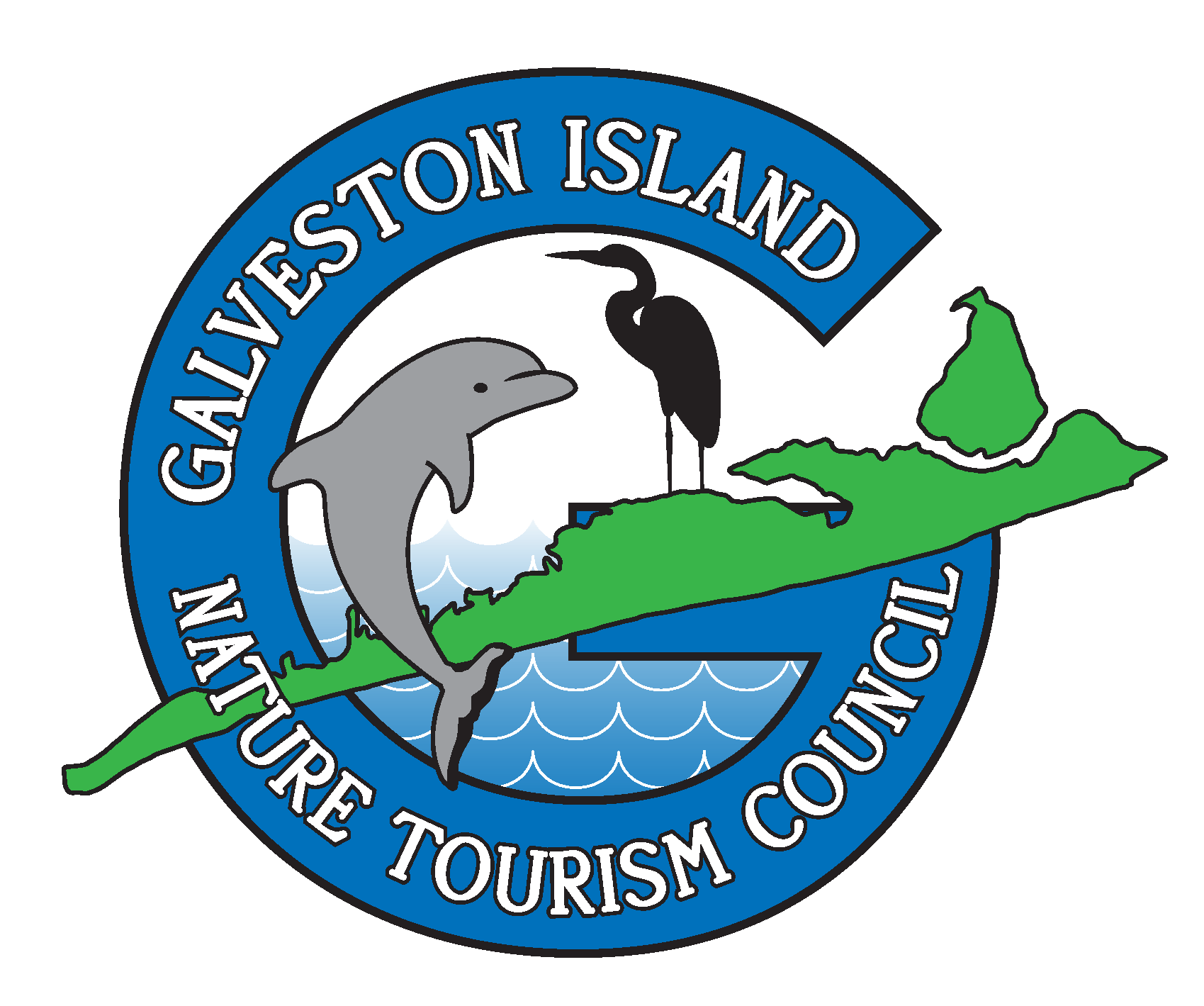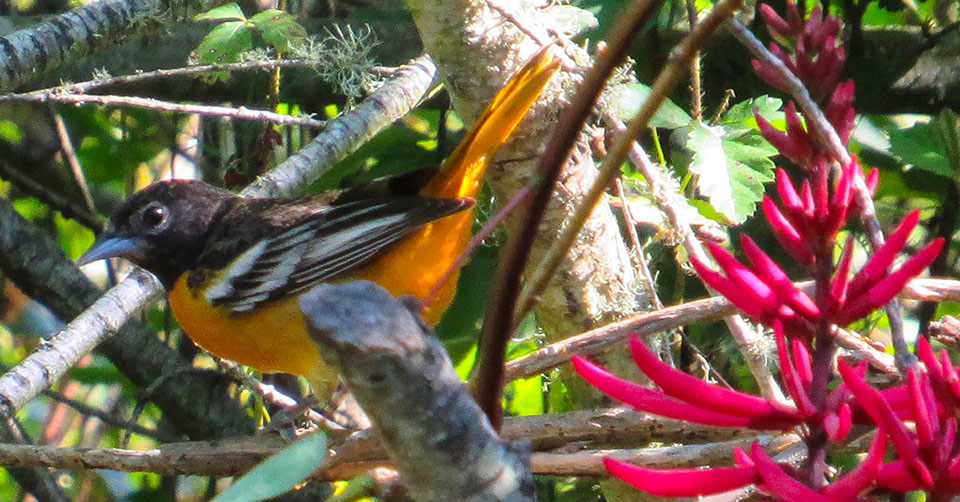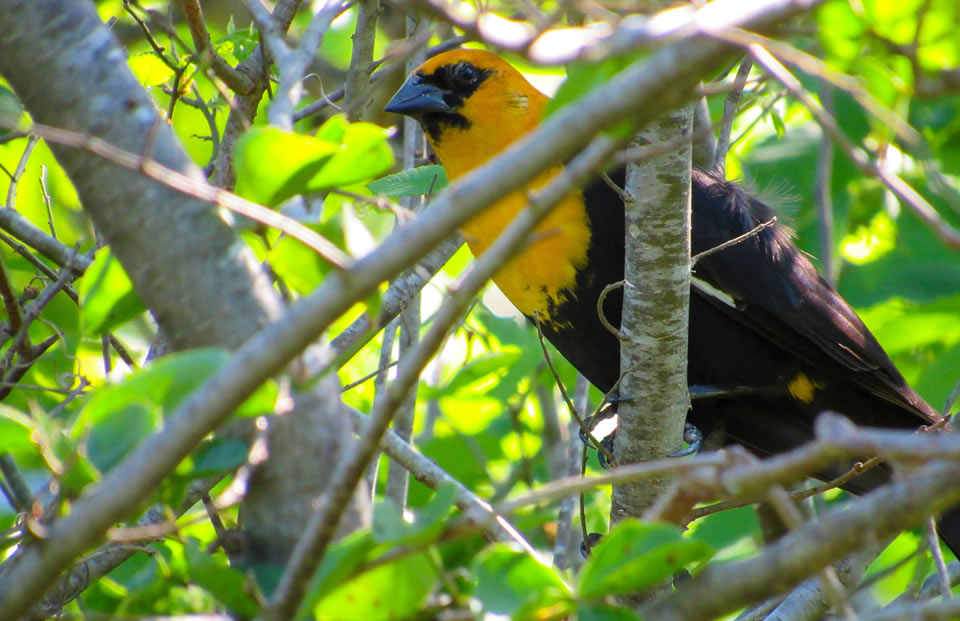If you’ve been out birding in the last week or so, you’ve probably noticed that many species have already begun molting into breeding plumage – a sure sign that spring migration is on its way! Hormonal changes are triggered by the increase in the hours of sunlight per day, as well as the shift in wind direction in the spring to being predominantly south to north.
These hormonal changes not only prompt plumage changes, but the desire to eat and begin building up fat reserves for migration. Many omnivores shift from eating seeds to insects and caterpillars to prepare for migration. It takes some species longer to build fat, so they begin bulking up sooner. Hormonal changes also create the deep desire to fly in a certain direction.
Galveston is positioned perfectly within the Mississippi and Central Flyways, with migrants passing through in spring from South America to North America both directly over the Gulf of Mexico and circumnavigating (going around) it. As birds move back to their breeding grounds, where there is less competition for resources and territories, they stop here to refuel along the way, crucial for remaining healthy for breeding season.
Migration is hazardous, with birds encountering problems such as lack of resources, bad weather, and predation. Virtually all songbirds are nocturnal migrants, flying from 300-500 miles per night when it is cooler and the air is less turbulent, thereby burning less energy for their flight method (powered by flapping.) For this reason, buildings that leave their lights on at night are also a hazard, as we have experienced here in Galveston in the recent past.
Diurnal (daytime) migrants are large, soaring birds that rely on thermals to save energy, so they don’t have to flap as much. Long distance migrants also have longer wings, requiring less flapping, flying at altitudes of up to 25,000 feet and at speeds of up to 50 miles per hour. It is quite common to see silent flocks of diurnal migrants such as White Pelicans and various species of gulls moving northward.
When birding on Galveston Island during spring migration, be sure to keep a watchful eye out no matter where you are. Although places such as Lafitte’s Cove and Corp Woods Nature Sanctuary are well-known migrant traps attracting noisy flocks of Baltimore Orioles and other colorful species, songbirds may stop to rest and refuel any place with scrubby brush and trees. I have seen Painted Buntings on the dunes near the East End Lagoon Nature Trail, Yellow-headed Blackbirds along 8 Mile Road, and Indigo Buntings all over the place.
If you’re not sure where to visit, you can find our self-guided Birding Itineraries HERE and at the Galveston Visitors Center. You really can’t go wrong!
#BirdGalveston

Kristine Rivers founded Birding for Fun in 2015, and is a popular tour guide and speaker whose enthusiasm for nature is contagious. A lifelong birder, she has been an area leader for the Brazoria Columbia Bottomlands Christmas Bird Count since 2011, and has been President of the Texas Master Naturalist Cradle of Texas chapter since January 2017.
Photo Credits: Kristine Rivers


